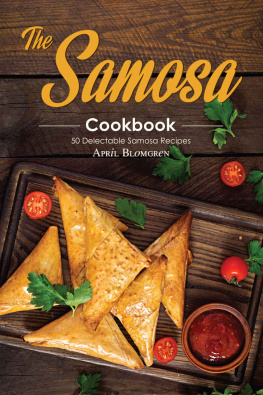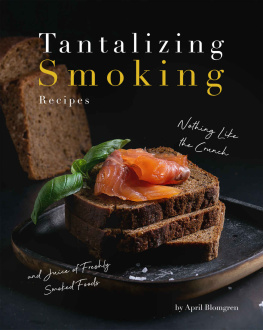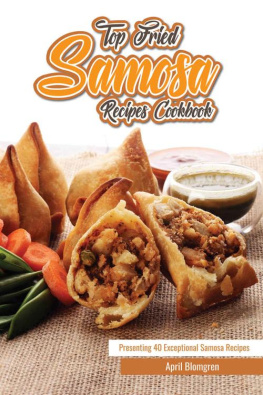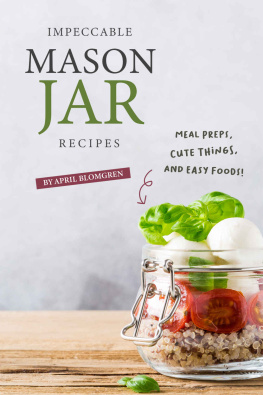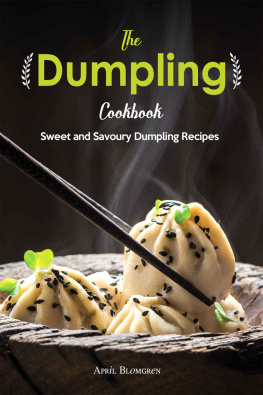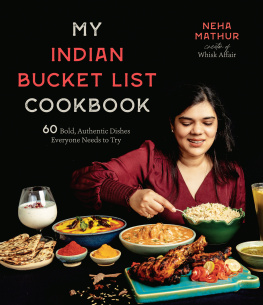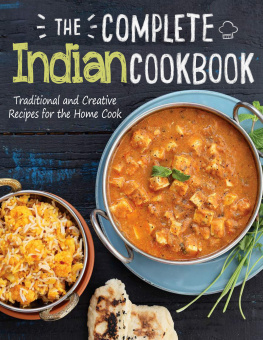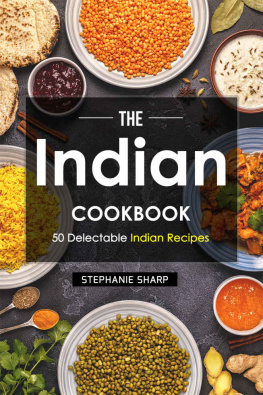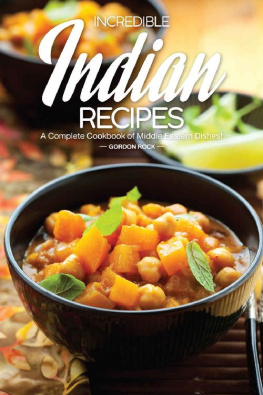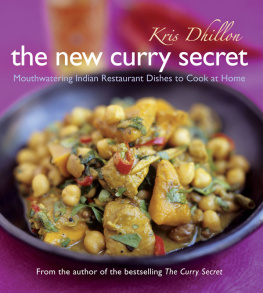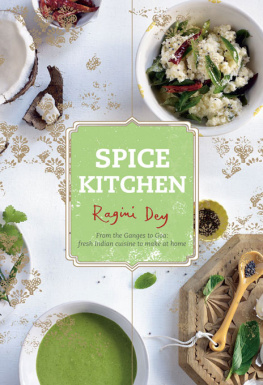Indian Cookbook
60 Authentic Indian Recipes to Spice Up Your Meals
BY
April Blomgren
Copyright 2020 April Blomgren
License Notes
No part of this Book can be reproduced in any form or by any means including print, electronic, scanning or photocopying unless prior permission is granted by the author.
All ideas, suggestions and guidelines mentioned here are written for informative purposes. While the author has taken every possible step to ensure accuracy, all readers are advised to follow information at their own risk. The author cannot be held responsible for personal and/or commercial damages in case of misinterpreting and misunderstanding any part of this Book
Thanks for Purchasing My Book! Heres your reward!
Thank you so much for purchasing my book! As a reward for your purchase, you can now receive free books sent to you every week. All you have to do is just subscribe to the list by entering your email address in the box below and I will send you a notification every time I have a free promotion running. The books will absolutely be free with no work at all from you! Who doesnt want free books? No one! There are free and discounted books every day , and an email is sent to you 1-2 days beforehand to remind you so you dont miss out. Its that easy! Enter your email now to get started!
Author Page: https://www.amazon.com/author/april-blomgren
Table of Contents
Introduction
India is a land of diversification, and this diversity shows in its cuisine. Nowhere in the world is excellent diversity more a fact of life than in India. And nowhere are the stories of a people and religion more apparent than in their food. Typically, an Indian meal contains a wet or dry dish of meat or vegetables or both. This dish is generally eaten with any Indian flatbread or rice. North India is a land of flatbreads, while South India is a land of rice. India has a coastline that stretches for 7,516.6 km (4,671 miles), and you can find a wide variety of seafood here, depending on which part of the coast you're at. Not just the ingredients, but the preparation methods also differ from region to region.
The majority of the people in India are Hindus, and the genuinely devout Hindus are usually vegetarian. Vegetarianism is especially prevalent in central India. A balanced meal has the right balance of carbohydrates, fiber, protein, and fat. The diet should be rich in other vitamins and minerals too, which Indian food usually is, thanks to the presence of vegetables, legumes, and grains. The primary sources of protein in these vegetarian-dominated areas are beans, grains, lentils, peas, etc. Indians usually refer to these as "Dal."
This book is mainly for beginners in Indian cooking. You will find that the majority of recipes in this book are recipes with the most uncomplicated cooking procedure. Specific ingredients make the recipes as healthy as possible without compromising the authentic Indian taste.
With this book, I want to take you on an adventurous ride through India. Experience the real dishes that Indians eat in their homes, local cafs, temples, parties, wedding banquets, and religious festivals.
Indian Meals and Common Ingredients
Indian cuisine makes use of a vast number of ingredients. This may be confusing or too overwhelming for some. It is essential to start with the basics and build your supplies as you go along. Remember that spices lose their flavour when stored for too long, so it's better to stock them in small quantities. The use of a particular spice is not the only requirement to achieve an Indian touch in your dishes. Indian cuisine involves a "layering" of flavours to achieve the desired result. Each ingredient is cooked in a particular way at a certain point in the cooking process to release the desired flavour notes. You will notice this in the recipes. Many ingredients that were previously considered inauthentic, such as cream and potato, are now being incorporated in dishes. After all, authentic Indian cuisine traditionally allows for resourcefulness and creativity in cooking. Here are some ingredients recommended for a beginner in Indian cuisine:
Flours
Indian cooking makes use of many kinds of flours. Here are some more commonly used: Atta - Finely ground whole wheat flour used to make chapatis, parathas, and other Indian bread.
Gram or besan is a gluten-free flour made from ground chickpeas used for making pakoras, khandvi, and halwa.
Maida is an all-purpose flour used for naan, cakes, and pastries.
Rice flour - Ground rice used for roti, bhajji, and bhakri.
Ghee
Clarified butter that has been simmered in such a way that the milk solids have caramelized, and a nutty flavour is imparted. Used for a variety of dishes or as a substitute for oil.
Oil
Mustard oil is a staple, but you may also use any vegetable or cooking oil. Ghee is also a popular substitute. Southern parts of India use light sesame oil, which has a high smoking point compared to dark sesame oil (which is more prevalent in East Asia) and is ideal for deep frying.
Paneer
It is a traditional Indian unsalted cheese made from fresh milk curdled with lemon juice or vinegar. Cottage cheese is an acceptable substitute.
Rice
Basmati rice is traditional, but cooking may be a bit complex for the beginner or if one is pressed for time. If you're not confident about your rice-cooking skills, you can use parboiled or converted rice (like Uncle Ben's).
Gobindobhog is sticky rice popular in Southern Indian recipes and desserts.
Jasmine rice can be substituted because it has a pleasant fragrance and flavour.
Semolina and Vermicelli
They are widely used for savoury and sweet dishes. These two ingredients come in handy for breakfast and snack recipes. Semolina, or rava, as known in South India, is a granulated and refined whole-wheat grain. Roasted vermicelli is available in Indian groceries. Use it to make upma or kheer (sweet pudding).
Fruits and Vegetables
Banana and jackfruit are commonly used fruits. Every South Indian cuisine has its regional-specific vegetables, like ash gourd, snake gourd, ridge gourd, bitter melon, and tubers. You can find most of these vegetables, including curry leaves, in Indian or Asian grocery stores. Some of the rare finds are available in the frozen aisle. I usually stock up on frozen coconut and moringa pods or drumsticks.
Indian Spices and Seasonings
Indian spices are unique, exotic, and possess an excellent aroma, which brings the ultimate taste of food. Historically, Indian spices have been one of India's most significant exported commodities and go best with all kinds of food!
Ajwain Seeds
Ajwain,also known as bishop's weed, caraway, or caromis an annual herb in the family Apiaceae. When crushed, they emit an intense and highly aromatic, thyme-like aroma that calms down once cooked. When eaten raw, they have an intensely fiery and pungent bite. These seeds are a fantastic home remedy to relieve stomachaches and are frequently chewed raw by people with seasoned tastes.
Cardamom Pods or Elaichi in Hindi
Two variety of this is commonly available: small green ones and large black ones. The green ones have a strong refreshing fragrance, while the big black ones have a milder woody-smoky aroma. Both are excellent home remedies to treat and manage gas, and also for nausea and vomiting. They also work as a gr natural mouth freshener.


